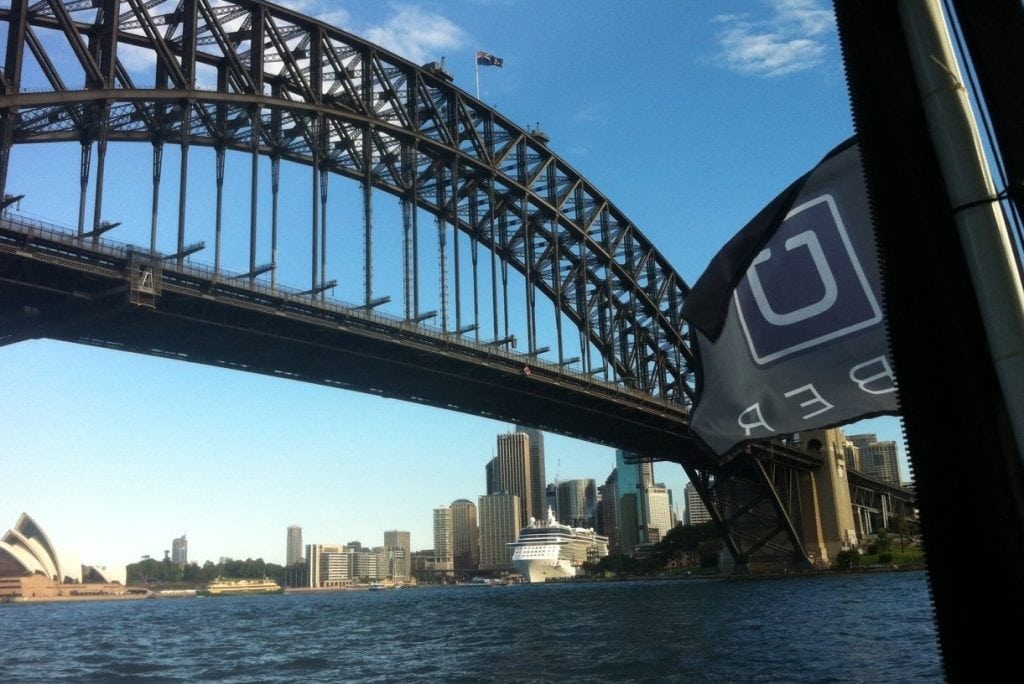Skift Take
India’s Ola has started operations in two major Australian cities, following hot on the heels of Estonia’s Taxify. The newcomers are exploiting opportunities unlocked when Uber paved the way for increased competition in a market in the tight grip of taxi operators.
Australia’s taxi industry is facing another competitor, with India’s Ola ridesharing company starting operations in Sydney and Perth with plans to expand into Melbourne.
Wolf Aron, Ola head of operations in Australia, told Skift the Indian company saw “a real opportunity in Australia to provide a credible alternative in the rideshare space for both customers and drivers.”
Ola was attracted to Australia’s “supportive regulatory environment coupled with a market that is extremely welcoming to new players,” Aron said, “and we firmly believe that there’s immense scope to scale up the existing ridesharing ecosystem, especially with respect to building high-quality travel experience through technology, innovation and collaboration.”
Ola has signed up 7,000 drivers around the country and continues to lure drivers away from its rivals, Uber and traditional cabs, as well as attract fresh recruits.
Ola has entered a rideshare market dominated by Uber, which has been operating in the country since 2015.
But it is not just Ola that is challenging the U.S.-based pioneer. Estonia’s Taxify has been operating in Australia’s biggest cities, Sydney and Melbourne, since December, with more than 10,000 drivers – a large proportion believed to be Uber defectors lured by Taxify’s lower cut of their fare revenue. Taxify reportedly takes a 15 percent commission, while Uber’s cut varies between 20 and 25 percent commission on each fare.
The taxi industry is attempting to downplay the impact of the new ridesharing entrants on its market, with Blair Davies, CEO of the Australian Taxi Industry Association, predicting only “collateral impacts for the taxi industry.” He expects the new players to “carve out significant shares of Uber’s existing business.”
TAXI REVENUES AND PROFITS TAKE A HIT
Industry analyst IBISWorld has noted a significant hit to taxi revenues and profitability since the arrival of Uber. The latest market overview notes that taxi revenues have only risen by 0.5 percent per year over the past five years, and that there was actually a 1.2 percent decline in 2017/18 “as competitive pressures from external players such as UberX continue to mount.”
IBISWorld estimated Uber’s marketshare at less than 1 percent, but that measure was taken before the ride-share service was legalized in most Australian states.
While it’s unclear which businesses will be most affected by the new entrants – both in terms of driver defections and customer preferences, the taxi industry is not taking the onslaught lying down. Davies said his industry is responding by radically overhauling its approach to driver recruitment and training. “Also, taxi companies are running promotions and marketing campaigns that target ride-sourcing drivers, highlighting the many advantages of driving a taxi over using the driver’s own vehicle,” he said.
REGULATORY BARRIERS COME DOWN
Uber paved the way for the new entrants by challenging regulations which have tightly controlled Australia’s taxi and limousine market.
Australia’s state governments control the market by limiting the licenses required to operate taxis and private hire vehicles. These restrictions initially prevented ride-share operations, but all the states have now introduced legislation to permit the transport alternative. The Australian Capital Territory, which includes the seat of federal government, Canberra, was the first to give approval for Uber to operate in 2015. The northern territory was the last authority to give the green light to Uber in April last year.
Aron said Ola complies with local regulations: “We work in close collaboration with the Government and relevant authorities to create services that best suit local requirements. We are hopeful that we will do our bit to develop ingenious solutions for solving local problems by collaborating with local communities and organizations.”
Taxi operators, many of whom have invested more than $235,000 (A$300,000) in their license, have sought compensation for their losses at the hands of rideshare rivals that do not hold taxi licenses. They have also lobbied for tighter driver regulation.
ATIA’s Davies said taxi operators expect authorities to “enforce the rules fairly and without partiality (and) ensure that new entrants compete on the same terms, and fully comply with the same regulations, as incumbent service providers.”
WINNERS AND LOSERS
Just as Uber grabbed marketshare from the established players when it entered Australia, three years later, it is likely to lose customers to the newcomers.
IBISWorld analyst Will McGregor explained: “Uber has a large presence in Australia in terms of its geographic spread and its favor among consumers. The entry of large foreign-owned operators such as Ola and Taxify will likely increase competition in the industry, and place pressure on Uber and taxi operators based on price.”
McGregor cited Ola’s “10 free rides” promotion when it entered the Perth and Taxify’s launch offer of up to 50 percent off rides for the first month.
While Uber and the taxi sector are the likely losers in the more competitive ground transport market, consumers are clearly the big winners in a market which has changed fundamentally. “With more companies operating in the industry, price-based competition is expected to increase,” said McGregor. “Consequently, consumers may increasingly favor services such as those offered by Uber, Taxify and Ola over other forms of transportation.”
The Daily Newsletter
Our daily coverage of the global travel industry. Written by editors and analysts from across Skift’s brands.
Have a confidential tip for Skift? Get in touch
Tags: australia, gateway, ridesharing
Photo credit: Uber and Australia’s taxi sector are under attack from new entrants. Uber
